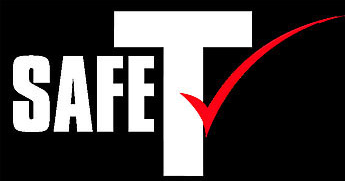According to the Occupational Healthy & Safety Code 2009, the following sections apply directly to the use of such an item as the Safe-T-Check.
In order to fully comply with the following, think of how simple and budget-friendly it is to install a Safe-T-Check first, thereby performing your due diligence for your worker safety, and complying with the Occupational Healthy & Safety Code at the same time.
Part 2 Hazard Assessment, Elimination and Control
Hazard Elimination and Control
9(1) If an existing or potential hazard to workers is identified during a hazard assessment, an employer must take measures in accordance with this section to
(a) eliminate the hazards, or
(b) if elimination is not reasonably practicable, control the hazard.
9(2) If reasonably practicable, an employer must eliminate or control a hazard through the use of engineering controls.
9(3) If a hazard cannot be eliminated or controlled under subsection (2), the employer must use administrative controls that control the hazard to a level as low as reasonably achievable.
9(4) If the hazard cannot be eliminated or controlled under subsections (2) or (3), the employer must ensure that the appropriate personal protective equipment is used by workers affected by the hazard.
9(5) If the hazard cannot be eliminated or controlled under subsections (2), (3) or (4), the employer may use a combination of engineering controls, administrative controls or personal protective equipment if there is a greater level of worker safety because a combination is used.
Part 4 Chemical Hazards, Biological Hazards and Harmful Substances
Potential Worker Exposure
21(1) If a worker may be exposed to a harmful substance at a work site, an employer must identify the health hazards associated with the exposure and assess the worker’s exposure.
21(2) The employer must ensure that a worker who may be exposed to a harmful substance at a work site
(a) is informed of the health hazards associated with exposure to that substance,
(b) is informed of measurements made of airborne concentrations of harmful substances at the work site, and
(c) is trained in procedures developed by the employer to minimize the worker’s exposure to harmful substances, and understands the procedures.
21(3) A worker who is provided with training under subsection (2) must use the procedures appropriately and apply the training.
